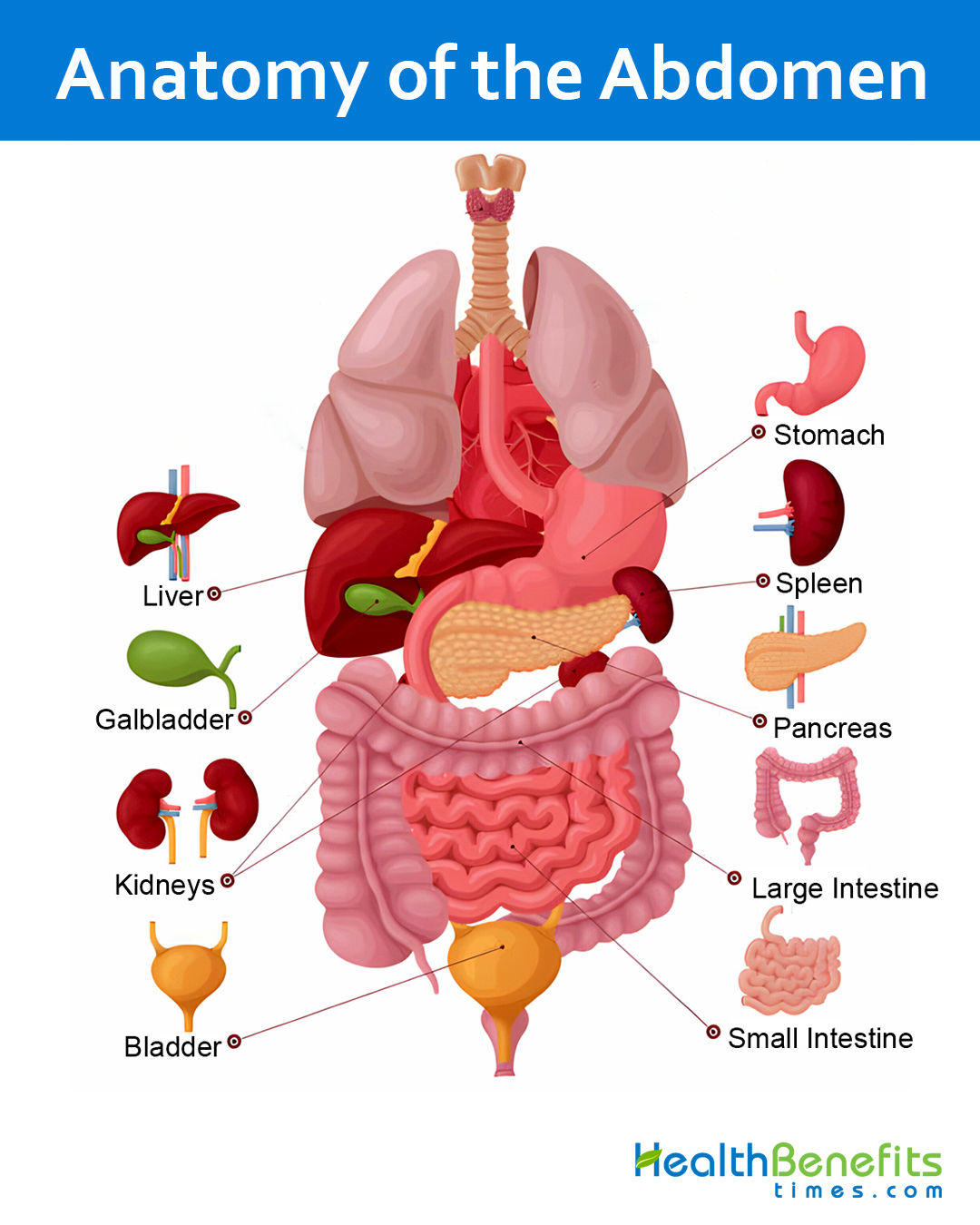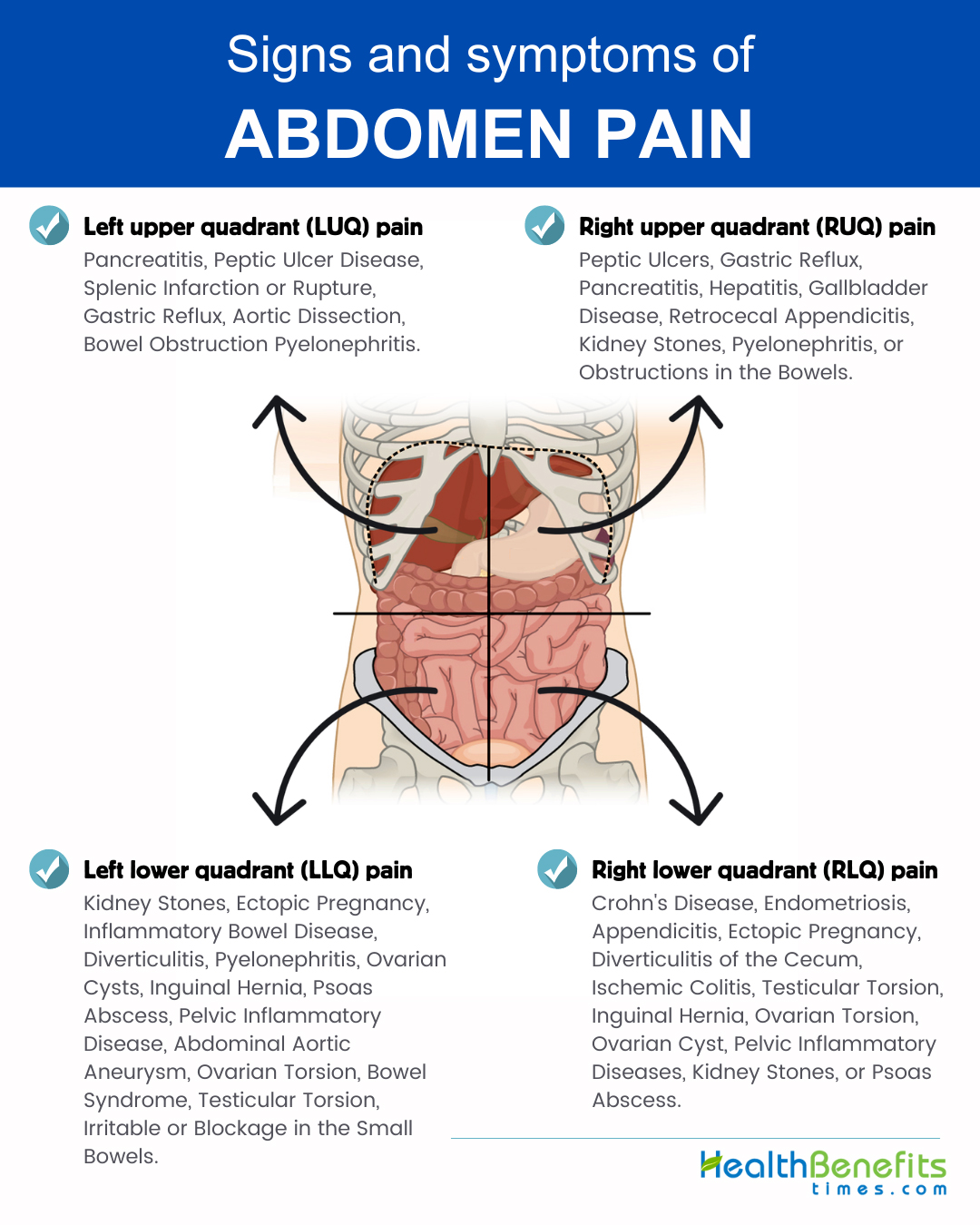What is an Abdomen?
The abdomen, informally called belly, spans the area between the chest and hips. It encompasses the body cavity that stretches from the thorax (chest) down to the lower pelvic region. The back of this cavity is encased by the spine and back muscles, while the front and sides are fortified by three layers of muscles. These abdominal muscles play a crucial role in supporting the internal organs and facilitating movements such as bending and twisting of the upper body. The inner lining of the abdominal cavity is coated with a slender membrane known as the peritoneum, which also envelops the internal organs.
Located between the lower edge of the ribcage and the upper margin of the thighs, the abdomen houses the abdominal cavity. This cavity is demarcated from the thorax above by the diaphragm and contains key components of the digestive and urinary systems. Additionally, the lower section of the abdomen is framed by the pelvic bones, which enclose the reproductive system’s organs.
Anatomy of the Abdomen
 Inside the abdomen there are many vital organs including the stomach, liver, both the large and small intestines, pancreas, gallbladder, kidneys, and adrenal glands. Situated just beneath the abdomen is the pelvic cavity, home to the bladder, rectum, and parts of the reproductive system specifically, the uterus and ovaries in females, and the prostate gland and seminal vesicles in males.
Inside the abdomen there are many vital organs including the stomach, liver, both the large and small intestines, pancreas, gallbladder, kidneys, and adrenal glands. Situated just beneath the abdomen is the pelvic cavity, home to the bladder, rectum, and parts of the reproductive system specifically, the uterus and ovaries in females, and the prostate gland and seminal vesicles in males.
While the term “solar plexus” is occasionally used to refer to the abdomen, it more accurately describes a dense network of nerves located in the upper abdominal region. The abdomen’s front and sides lack bone protection, rendering it susceptible to injuries. An example of its vulnerability is the common experience of losing breath upon receiving an impact to the abdomen, highlighting the sensitivity of this area.
Structure of Abdomen
The abdominal wall consists of layers that include muscle, skin, connective tissue, and fat, with thickness varying across these layers. Encasing the abdominal cavity and its internal organs such as the stomach and intestines is the peritoneum, a delicate membrane composed of two layers. Protection for the abdomen from the rear is provided by the spinal column and the lower ribs. However, the front part of the abdomen remains exposed, with only the abdominal wall serving as a protective layer for the internal organs.
Signs and symptoms of Abdomen Pain
- Right upper quadrant (RUQ) pain: Pain in the right upper quadrant (RUQ) of the abdomen is often caused by conditions such as gastric reflux, gallbladder disease, hepatitis, peptic ulcers, pancreatitis, pyelonephritis, kidney stones, retrocecal appendicitis, or obstructions in the bowel.
- Right lower quadrant (RLQ) pain: Pain in the right lower quadrant (RLQ) of the abdomen is frequently associated with various conditions, including appendicitis, Crohn’s disease, diverticulitis of the cecum, ectopic pregnancy, endometriosis, inguinal hernia, ischemic colitis, ovarian cyst, ovarian torsion, pelvic inflammatory disease, psoas abscess, testicular torsion, or kidney stones.
- Left upper quadrant (LUQ) pain: Pain in the left upper quadrant (LUQ) of the abdomen is typically caused by conditions such as gastric reflux, peptic ulcer disease, pancreatitis, splenic infarction or rupture, pyelonephritis, bowel obstruction, or aortic dissection.
- Left lower quadrant (LLQ) pain: Pain in the left lower quadrant (LLQ) of the abdomen is often related to a variety of conditions, including diverticulitis, kidney stones, pyelonephritis, ectopic pregnancy, inflammatory bowel disease, inguinal hernia, ovarian cysts, ovarian torsion, pelvic inflammatory disease, psoas abscess, testicular torsion, abdominal aortic aneurysm, irritable bowel syndrome, or obstructions in the small bowel.

